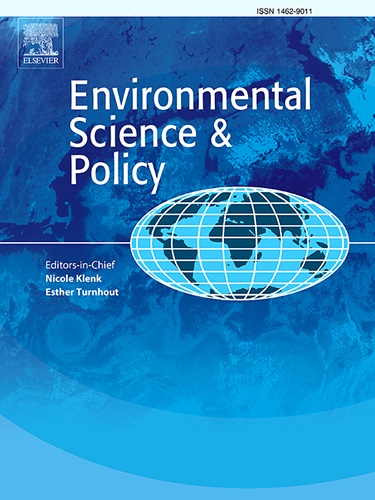Mapping barriers to food, energy, and water systems equity in the United States
IF 4.9
2区 环境科学与生态学
Q1 ENVIRONMENTAL SCIENCES
引用次数: 0
Abstract
Barriers to affordable, accessible, high-quality food, energy, and water systems (FEWS) harm social equity. Connections within and across FEWS suggest that co-occurring barriers to equity can compound vulnerability. We hypothesized that barriers to FEW resources are strongly associated with geographic location, both within and across FEWS, as they rely heavily on localized sociopolitical and natural environments. This study explored the geographic relationships between FEWS barriers and social equity through a spatial analysis of census tracts within the United States. Cluster analyses showed that all FEWS barriers had a positive spatial autocorrelation (Moran's I = 0.12–0.94), with energy barriers being the most spatially clustered and affordability barriers being the least spatially clustered. In 54 % of census tracts, we observed the co-occurrence of low barriers to water quality and access. Barriers to FEWS affordability almost always co-occurred in parallel (e.g., high barriers to affordability in one system co-occurred with high barriers to affordability in another system). Finally, we developed a spatial index of the barriers to FEWS equity to determine vulnerability at the census tract scale, which had a positive spatial autocorrelation (Moran's I = 0.41). Clusters and intersections of FEWS equity barriers suggest that resources are interconnected, resulting in additional challenges for people living in these areas. The maps of barriers to equity in FEWS are useful tools that could help stakeholders (e.g., federal agencies, city planners, utilities) distribute FEWS resources fairly and begin engagement with communities about FEWS barriers in their local context.
绘制美国粮食、能源和水系统公平的障碍图
可负担、可获得的高质量食品、能源和水系统(FEWS)的障碍会损害社会公平。粮食、能源和水系统内部和之间的联系表明,同时存在的公平障碍会加剧脆弱性。我们假设,在 FEWS 内部和 FEWS 之间,获得 FEW 资源的障碍与地理位置密切相关,因为它们在很大程度上依赖于当地的社会政治和自然环境。本研究通过对美国人口普查区的空间分析,探讨了家庭预警系统障碍与社会公平之间的地理关系。聚类分析显示,所有的粮食预警系统障碍都具有正的空间自相关性(莫兰氏 I = 0.12-0.94),其中能源障碍的空间聚类最大,而负担能力障碍的空间聚类最小。在 54% 的人口普查区中,我们观察到水质和用水障碍同时存在。与供水系统可负担性相关的障碍几乎总是同时存在(例如,一个系统中的高可负担性障碍与另一个系统中的高可负担性障碍同时存在)。最后,我们开发了一个用于确定人口普查区脆弱性的家庭预警系统公平性障碍空间指数,该指数具有正空间自相关性(莫伦 I = 0.41)。FEWS 公平障碍的集群和交叉表明,资源是相互关联的,这给生活在这些地区的人们带来了额外的挑战。FEWS 公平障碍地图是有用的工具,可帮助利益相关者(如联邦机构、城市规划者、公用事业)公平分配 FEWS 资源,并开始与社区就其当地环境中的 FEWS 障碍进行接触。
本文章由计算机程序翻译,如有差异,请以英文原文为准。
求助全文
约1分钟内获得全文
求助全文
来源期刊

Environmental Science & Policy
环境科学-环境科学
CiteScore
10.90
自引率
8.30%
发文量
332
审稿时长
68 days
期刊介绍:
Environmental Science & Policy promotes communication among government, business and industry, academia, and non-governmental organisations who are instrumental in the solution of environmental problems. It also seeks to advance interdisciplinary research of policy relevance on environmental issues such as climate change, biodiversity, environmental pollution and wastes, renewable and non-renewable natural resources, sustainability, and the interactions among these issues. The journal emphasises the linkages between these environmental issues and social and economic issues such as production, transport, consumption, growth, demographic changes, well-being, and health. However, the subject coverage will not be restricted to these issues and the introduction of new dimensions will be encouraged.
 求助内容:
求助内容: 应助结果提醒方式:
应助结果提醒方式:


